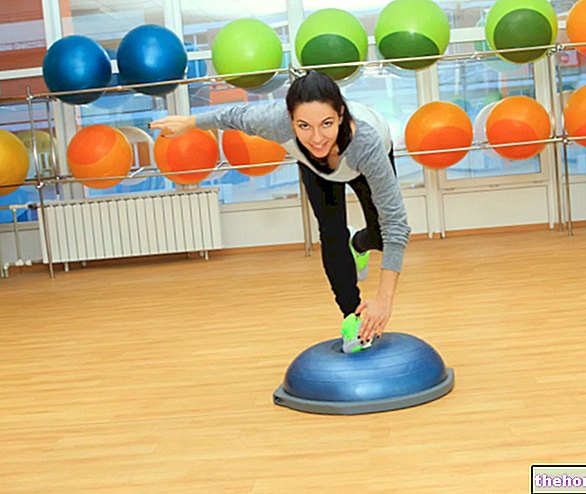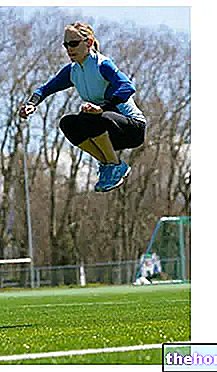Generalities of prolonged middle distance in athletics - 5000 and 10000m
The prolonged middle distance in athletics is a discipline that includes distances in which the aerobic metabolism mainly intervenes;

To determine the race speed in the 5,000 and 10,000m, it is useful to know that:
- The 10.000m are covered on average at the speed corresponding to the vd
- The 5.000m are traveled on average at a speed between the SA and the VAmax (precisely, about 96% of the VAmax, which in turn is much closer to the VO2max than the Vd), a parameter that plays a decisive role in the development specific aerobic power.

The Va max corresponds approximately to the race speed in 3000m
Aerobic endurance in prolonged middle distance in athletics - 5000 and 10000m
Resistance is also called aerobic CAPACITY, since it is a parameter related to the QUANTITY of work that can be performed through oxidative metabolism. Often "aerobic endurance" becomes synonymous with moderate pace and, both for young people and for more advanced athletes who play long or very long cross-country competitions, this statement corresponds to reality; on the other hand, in the specific exercises of prolonged middle distance, the speed of execution must be specific and get as close as possible to that of the vd (which can be improved with rhythms that oscillate between the SA and 20% less) since the mixture of energetic substrates changes considerably between the low and high aerobic band.
Aerobic Endurance Training: Training Means
Below you can see the summary table of the percentages of intensity with respect to the ANAEROBIC THRESHOLD (not the VO2max or maximum pulse) and the type of exercise to be used in prolonged middle distance training in athletics.
Running continues at a slow even pace
Includes running drills continues performed with a high level of muscle relaxation and respiratory balance - about 140 beats per minute (bm); have the goal of psychologically training the athlete and laying the cardio-circulatory and respiratory bases, as well as improving the transport of oxygen to the tissues. at high intensity and in active recovery.
The slow run for "prolonged middle distance training must" be performed: for juniors at 70-75% of the personal best over 5,000m, for seniors, 70-80% compared to the personal best over 10,000m (duration 60-90 "and 60-120"); the heart rate is always around 140bm and the lactic acid concentration NEVER exceeds 3mmol / l, placing itself above the AEROBIC THRESHOLD (SAE) but below the SA.
Running continues at an even average pace
It is "also" a continuous run, BUT with a fairly high cardiac commitment, which develops at a speed between 90-95% of the vd; the average run has the objective of building the physiological and mental bases for the adaptation to extensive fatigue. Initially it would be advisable to run distances less than the minimum indicated and subsequently increase the distance first and then the intensity.
The average run for prolonged middle distance training must be performed: for juniors 85-90% of personal best over 5,000m, for seniors, 90-92% compared to personal best over 10,000m (duration 8-19km and 10-18km); the heart rate is between 140-170bm and the lactic acid concentration is between 3 and 4mmol / l, placing itself in the high aerobic range and almost overlapping the HS.
Running continues at an increasing varied pace
- Continuous and in progression from slow to fast: the goal is the development of intensive endurance by making the fast fibers work in aerobiosis (distances 10-12km and 15km)
- Continuous progression from medium to fast: reserved for highly qualified athletes; like the previous one but it affects more on the development of the SA (distances 6-8km and 10km).
Continuous stroke with SHORT speed variations
It includes a 20 "warm-up followed by sections at higher speeds and higher than the race pace (duration 30" "- 2") alternating with slow bottom speeds; the objectives are: to develop intensive aerobic endurance, to stimulate the aerobiosis of fast fibers, to stimulate greater sensitivity to the various running rhythms and to encourage mastery of the technical gesture. It starts with a few repetitions and of short duration, increasing speed and reducing recovery.
The run continues with SHORT rhythm variations for the "prolonged middle distance training must" be performed: with variations of 1 "-1" 30 "" for the juniors and 1 "-2" for the seniors, with recoveries of 1-1 " 30 "", for a total duration of 60 "-70" and 60 "-80", with a number of variations equal to 10-12 and 12-16.
Continuous stroke with LONG speed variations
It includes a warm-up of 20 ", followed by sections at higher speeds equal to or slightly lower than the race pace (duration 3" -9 "), alternating with slow and weighted bottom speed to the previous effort; the goal is to develop intensive aerobic endurance and mental habit of enduring aerobic endurance (preparatory to work for aerobic power). It starts with a few repetitions and of short duration, increasing speed and reducing recovery.
The run continues with LONG rhythm variations for "prolonged middle distance training": with variations of 3 "-5" for juniors and 3 "-9" for seniors, with recoveries of 3 "-2" 30 "" and 3 "-2", for a total duration of 60 "-70" and 70 "-90", with a number of variations equal to 4-8 and 4-10.
Aerobic Power Training: Training Means
The aerobic power corresponds to the amount of ATP that the aerobic metabolism is able to synthesize in the unit of time; some means for the development of aerobic power, in addition to having a positive effect on the elevation of the HS, predispose the body to the insertion of other specific workouts for its intensive development.
Repeated tests of aerobic power
They are performed over distances of 1000-3000m and preceded by a warm-up type race; they have a volume equal to or greater than the competition distance and the recovery is relatively short and mildly active. They are performed from the beginning on the minimum distance required, which will then be increased, subsequently also increasing the speed and reducing recoveries.
The repeated tests of aerobic power for prolonged middle distance training must be performed: over distances of 1000-2000m for juniors and 1000-3000m for seniors, for a total of 5-8km and 8-12km, with recoveries of 3 "-1" and 2 "-1", and intensity between 96-102% for those from 1000-200m (juniors) and 96-105% for those from 1000-2000-3000m (seniors).
NB. Aerobic power develops ONLY in the periods: fundamental-intensive, pre-competitive and competitive, with interruption of the most demanding tables at 15-20 days from the main competition.
Bibliography:
The Handbook of the Athletics Coach - First part: general information, races and walking - Study & Research Center - pag. 69-84.Other articles on "Extended Half Fund - 5000 and 10000m - General and Training"
- Training for the Fast Half Fund
- Fast middle distance in athletics - 800 and 1500m
- Middle distance athletics - importance of strength and endurance
- Extended Half-Fund Training - 5000 and 10000m - 2nd Part




























